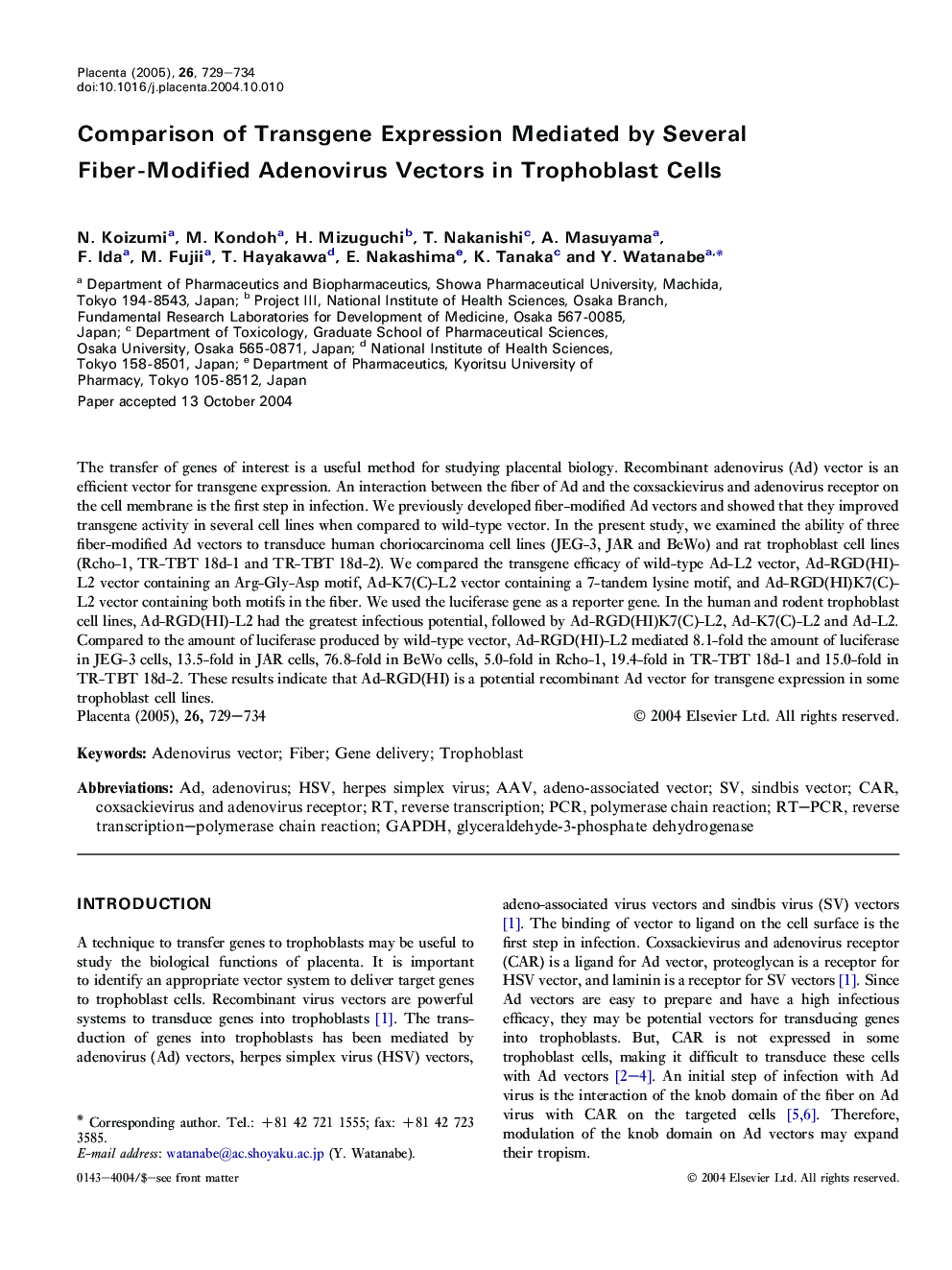| Article ID | Journal | Published Year | Pages | File Type |
|---|---|---|---|---|
| 9109120 | Placenta | 2005 | 6 Pages |
Abstract
The transfer of genes of interest is a useful method for studying placental biology. Recombinant adenovirus (Ad) vector is an efficient vector for transgene expression. An interaction between the fiber of Ad and the coxsackievirus and adenovirus receptor on the cell membrane is the first step in infection. We previously developed fiber-modified Ad vectors and showed that they improved transgene activity in several cell lines when compared to wild-type vector. In the present study, we examined the ability of three fiber-modified Ad vectors to transduce human choriocarcinoma cell lines (JEG-3, JAR and BeWo) and rat trophoblast cell lines (Rcho-1, TR-TBT 18d-1 and TR-TBT 18d-2). We compared the transgene efficacy of wild-type Ad-L2 vector, Ad-RGD(HI)-L2 vector containing an Arg-Gly-Asp motif, Ad-K7(C)-L2 vector containing a 7-tandem lysine motif, and Ad-RGD(HI)K7(C)-L2 vector containing both motifs in the fiber. We used the luciferase gene as a reporter gene. In the human and rodent trophoblast cell lines, Ad-RGD(HI)-L2 had the greatest infectious potential, followed by Ad-RGD(HI)K7(C)-L2, Ad-K7(C)-L2 and Ad-L2. Compared to the amount of luciferase produced by wild-type vector, Ad-RGD(HI)-L2 mediated 8.1-fold the amount of luciferase in JEG-3 cells, 13.5-fold in JAR cells, 76.8-fold in BeWo cells, 5.0-fold in Rcho-1, 19.4-fold in TR-TBT 18d-1 and 15.0-fold in TR-TBT 18d-2. These results indicate that Ad-RGD(HI) is a potential recombinant Ad vector for transgene expression in some trophoblast cell lines.
Keywords
Related Topics
Life Sciences
Biochemistry, Genetics and Molecular Biology
Developmental Biology
Authors
N. Koizumi, M. Kondoh, H. Mizuguchi, T. Nakanishi, A. Masuyama, F. Ida, M. Fujii, T. Hayakawa, E. Nakashima, K. Tanaka, Y. Watanabe,
